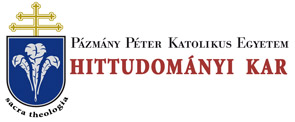Folia Theologica et Canonica, Supplementum (2016)
Hanns Engelhardt, Marriage and Divorce In Anglican Canon Law
54 HANNS ENGELHARDT After the accession of King James I in 1603 the Convocations of the Clergy compiled a set of canons which were confirmed by the King’s Letters Patent under the Great Seal on 6 September 1604 but not by Parliament. Therefore, the legal opinion in England prevailed that proprio vigore these Canons did not bind the laity.16 Insofar as they only repeated what was already the law in force this remained unaffected. The Parliament, first of England, then of the United Kingdom, continued legislating in church affairs17 as we shall see in some detail later. As Murray Hoffman, one of the foremost canon law scholars of the Episcopal Church in the 19th century, has observed, the English Parliament had, at that time at least, “a twofold capacity in Ecclesiastical legislation; one, as enforcing, with civil penalties and power, the laws of the Church; the other, as representing the Laity, and giving their consent to the laws of the Church.”18 2. Episcopal Church The Episcopal Church in the United States of America, the oldest independent Anglican church outside the British Isles, came into being after the American Revolutionary War which resulted in the establishment of an independent American state. Owing to American independence from Britain, the members of the Church of England in these parts, as far as they didn’t leave the country, had to sever their ties to a church the Supreme Governor of which was a foreign monarch, and to set up an independent church organisation.19 As the English law of the time didn’t provide a useful model of a church organisation separate from the State the American congregations had to break new ground. They followed, to an appropriate measure, the model of the state and set up a constitution as the basic law and canons. The Constitution provided for a General Convention, consisting of two Houses, Bishops and Deputies; in the latter House the Dioceses are represented by clergy and lay persons in equal number; after some wavering the two Houses were given equal weight so that decisions required the assent of both. The canons originally did not contain any regula“ Kemp, E. W., Counsel and Consent. Aspects of the Government of the Church as exemplified in the history of the English Provincial Synods, London 1961. 159 seq. 17 Cf. e.g., Stephens, A. J., The Statutes relating to the Ecclesiastical and Eleemosynary Institutions of England, Wales, Ireland, India, and the Colonies; with the decisions thereon, London 1845, passim. l® Hoffman, M., The Ritual Law of the Church, New York 1872. 347 19 Regarding the canonical development of Anglicanism in North America up to that time cf. Clarke, H. L., Constitutional Church Government In the Dominions Beyond the Seas and in other parts of the Anglican Communion, London 1924. 196 seqq. Prichard, R. W„ A History of the Episcopal Church, New York 2014.’ 1 seqq.
